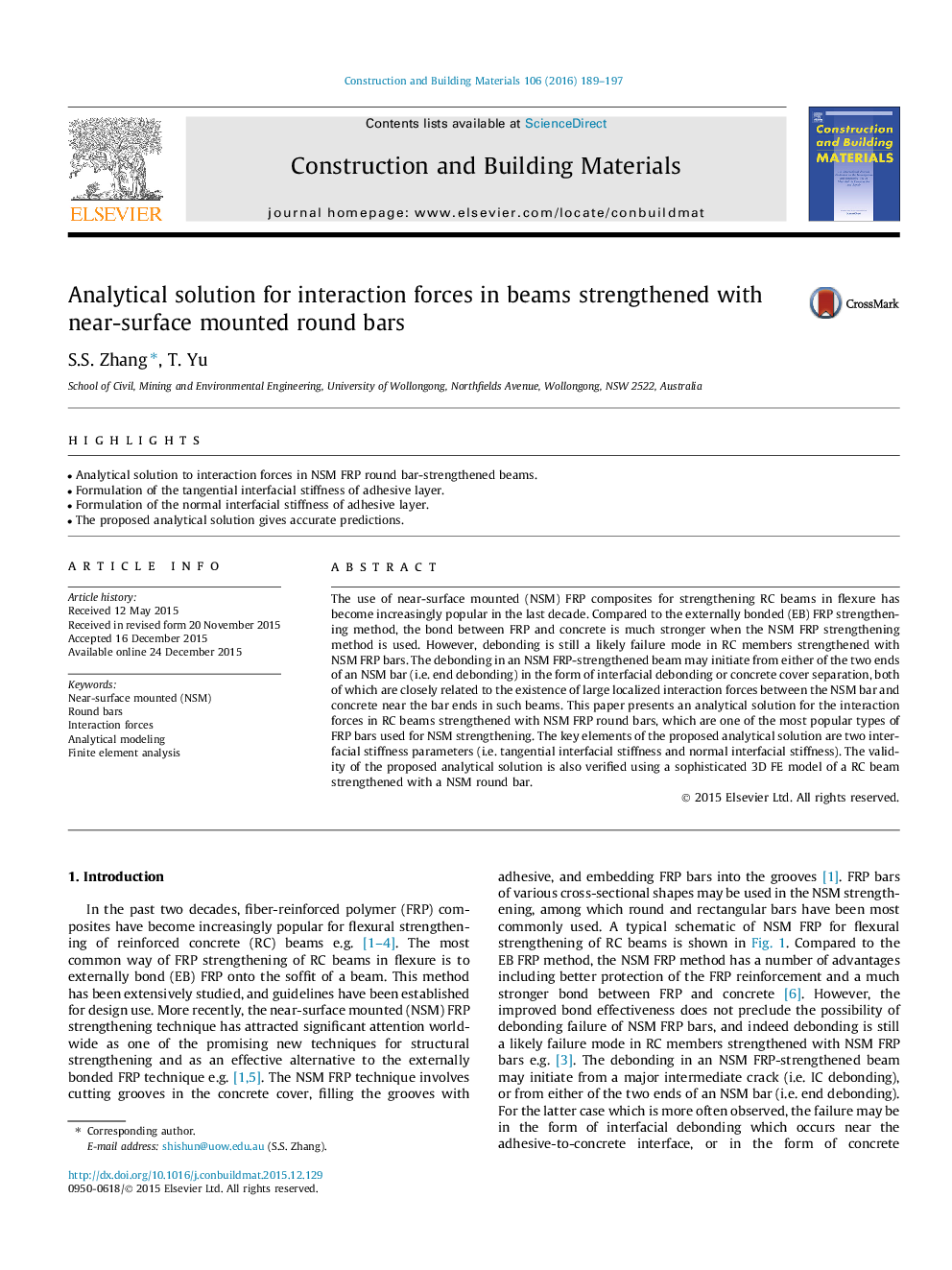| Article ID | Journal | Published Year | Pages | File Type |
|---|---|---|---|---|
| 256480 | Construction and Building Materials | 2016 | 9 Pages |
•Analytical solution to interaction forces in NSM FRP round bar-strengthened beams.•Formulation of the tangential interfacial stiffness of adhesive layer.•Formulation of the normal interfacial stiffness of adhesive layer.•The proposed analytical solution gives accurate predictions.
The use of near-surface mounted (NSM) FRP composites for strengthening RC beams in flexure has become increasingly popular in the last decade. Compared to the externally bonded (EB) FRP strengthening method, the bond between FRP and concrete is much stronger when the NSM FRP strengthening method is used. However, debonding is still a likely failure mode in RC members strengthened with NSM FRP bars. The debonding in an NSM FRP-strengthened beam may initiate from either of the two ends of an NSM bar (i.e. end debonding) in the form of interfacial debonding or concrete cover separation, both of which are closely related to the existence of large localized interaction forces between the NSM bar and concrete near the bar ends in such beams. This paper presents an analytical solution for the interaction forces in RC beams strengthened with NSM FRP round bars, which are one of the most popular types of FRP bars used for NSM strengthening. The key elements of the proposed analytical solution are two interfacial stiffness parameters (i.e. tangential interfacial stiffness and normal interfacial stiffness). The validity of the proposed analytical solution is also verified using a sophisticated 3D FE model of a RC beam strengthened with a NSM round bar.
